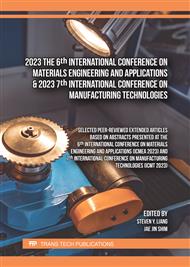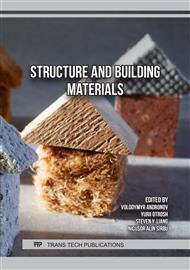p.63
p.69
p.75
p.85
p.99
p.105
p.113
p.121
p.127
Alkali Activation of Solid Waste from Cable Wire Manufacturing Industry for Building and Construction
Abstract:
Iron-laden tailings have received a lot of attention in recent years, especially for their potential use in civil engineering projects. Alkaline activation was studied as a method to use iron sludge from cable wire manufacturing industry (CWI). Two reagents, namely sodium silicate and sodium hydroxide concentrations of 1 M, 5 M, and 10 M were studied for alkaline activation. To make a paste, the solutions were combined with CWI waste. Using 50x50x50 mm3 molds, the paste was cast into triplicates and allowed to set. The molds were demolished once the paste had solidified, and the specimens were cured at increased temperatures and at room temperature. The specimens were cured for days, 7 days, and 14 days at ambient temperature. The specimens were subjected to geochemical and geotechnical testing after the curing period to determine the mechanism that contributed to unconfined compressive strength (UCS) development. The findings demonstrated that when the two reagents were compared, sodium hydroxide proved to be a better activator, resulting in a greater unconfined compressive strength, particularly when the specimen was cured at a high temperature. When cured at both elevated and ambient temperatures, the sodium silicate did not perform well as an activator, as the specimen were not durable.
Info:
Periodical:
Pages:
121-126
Citation:
Online since:
August 2023
Authors:
Keywords:
Price:
Сopyright:
© 2023 Trans Tech Publications Ltd. All Rights Reserved
Share:
Citation:



